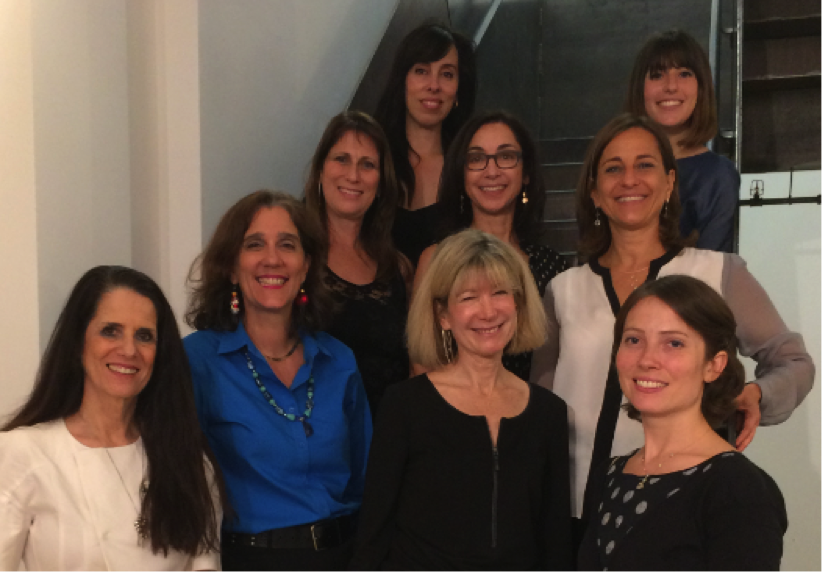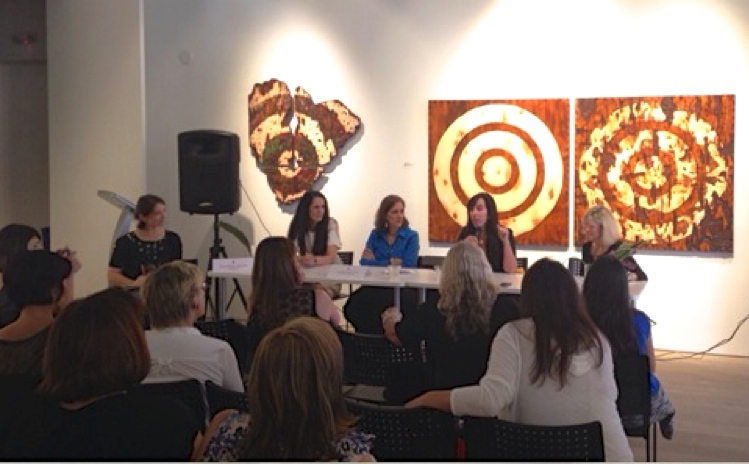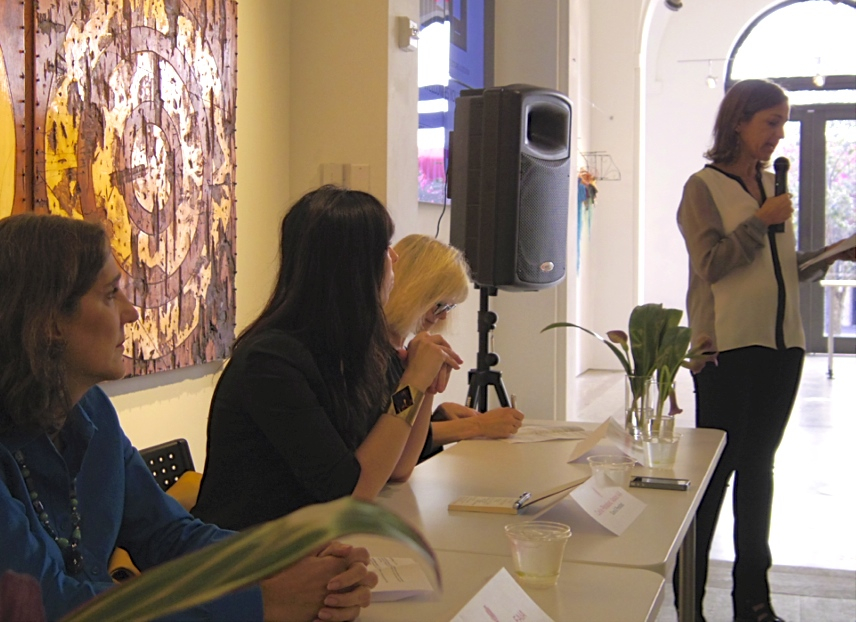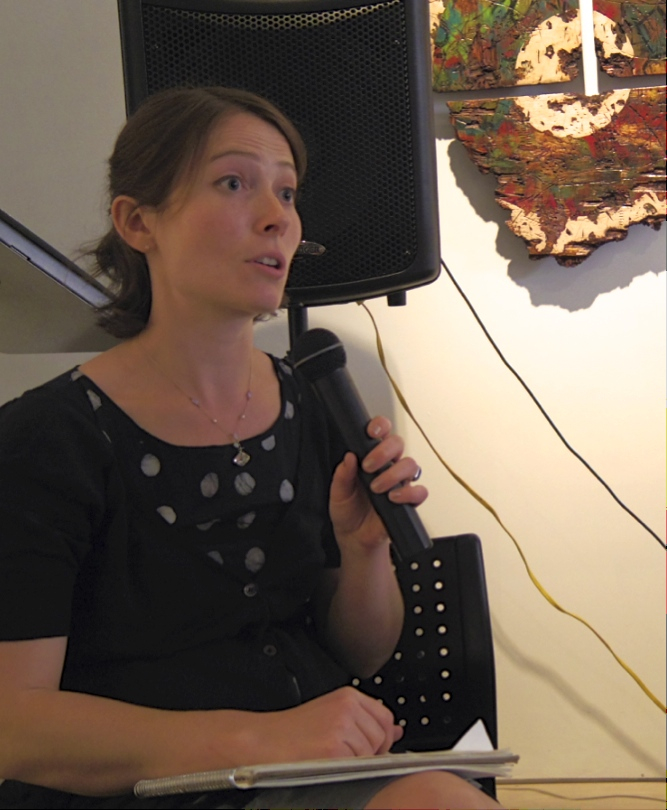Last December, during the week of Art Basel, Design Miami and numerous other Art fairs and events in the Sunshine City, I helped Caroline James put together a panel of women who practice architecture, titled “Principled Design”. Sponsored by the AIA Miami, Miami Center for Architecture & Design, Women in Architecture Miami, and Harvard GSD Women in Design, the event was successful in weaving into an already established Harvard Alumni Program Weekend.
The panel delved into a lively discussion on the various life experiences that architects bring into their practices and addressed such concepts as “principles, aesthetic aspirations, social concerns, joint creativity, range and structures of practice, and forms of collaboration.” I was touched by the deep conversations that ensued as Caroline probed the panelists’ minds with questions such as:
- What values do you bring into the design process, such as beauty or social concern?
- Are there moral principles in design practice?
- Are there ways that those values translate into how you practice, such as the acknowledgment of joint creativity and collaboration?
Principled Design participants: (Front Row, L to R): Louise Braverman, Lourdes Solera, Marilys Nepomechie, and Caroline James. (Middle Row): Nati Soto, Elizabeth Camargo, and Jaya Kader. (Back Row): Carie Penabad and Arielle Assouline-Lichten
Personally, the panel was a culmination of a two-year journey that helped me transition from being a sole practitioner in a home office, to opening a studio that is now an architectural practice of seven and growing. There were many stations visited during this journey, and in hindsight, it is not surprising that most of them had to do with gender issues. It is interesting that this personal/professional transformation coincided with significant events that have revealed and addressed the glaring gender issues in our profession and society at large. For the first time since I graduated architecture school in 1988, I am finally able to weave the two most integral and essential components of my life; being a mother of four and an architect (indeed an “Archimom”) into one conversation. For years I juggled these two roles, always downplaying one while I was engaged in the other, without clarity or synthesis.
Although I did not meet Caroline James until September 2014, I had reached out to her since I learned about the petition to the Pritzker Prize on behalf of Denise Scott Brown. Caroline, along with Arielle Assouline-Lichten had spearheaded the petition in March of 2013, while they were students at the GSD and members of Women in Design. Understanding the implications of the petition and its subsequent refusal from the Pritzker Jury was my first call to action as a woman architect. Up until that time, I, as well as other women architects of my generation with whom I have had these conversations, have operated with what I now call “blinders”; happy and grateful to do the work whenever it was possible, overlooking any distractions that would put our jobs in jeopardy. But the events that followed made it impossible to continue to wear the “blinders.”
Credit: Julia Morgan Papers, Special Collections, California Polytechnic State University
Last year, Julia Morgan became the first woman to receive the AIA Gold Medal posthumously, honoring her prolific practice that spanned several decades during the first half of the 20th Century. I had never heard of Julia Morgan, despite years of education at top institutions of higher learning. I was privileged to attend the AIA Convention in Chicago and witness Beverly Willis' passionate speech following the Gold medal award. For those not familiar with Beverly Willis, she established the Beverly Willis Architecture Foundation (BWAF) in 2002 with the mission of, “changing the culture of the building industry so that women’s work, whether in contemporary practices or historical narratives, is acknowledged, respected and valued”. An audience of thousands gave her a standing ovation at the convention, as she stated some hard truths regarding gender in architecture.
Outside our profession there have been parallel conversations that affect women in all fields. Recent publications such as Sheryl Sandberg's “Lean In”, Debora L. Spar's “Wonder Women” and Anne Mary Slaughter's famed article “Why Women Can't Have it All” in the Atlantic, have changed the landscape of gender issues across professional and leadership fields. And still there were those with whom I tried to engage in needed conversations around equity and inclusion, who dismissed my concerns as “problems of women from my generation.” “The new generation of women (the so called ‘millennials’) just don't have your issues”, I was told by some. So I wondered... But shortly thereafter, there was Emma Watson's HeForShe 2014 campaign speech at the UN, one that clarified for everyone not only that the gender issues are ever present in 21st century western society--for women of all generations--but also highlighted a certain urgency to address them.
The last event that confirmed my call to action was my attendance at the third sold out symposium hosted by The Missing 32% Project titled "Equity by Design: Knowledge, Discussion, Action!" in San Francisco last October.
Equity by Design: Knowledge, Discussion, Action on October 18, 2014.
The conference was a transformative experience. As I heard speakers and witnessed the data from the early findings of the Equity in Architecture Survey first hand, I finally understood how difficult the system is set up for women to succeed in our profession. I was most captivated by the keynote speaker, Stewart Friedman, a Wharton Professor, whose research and scholarship have contributed a new framework for the work/life balance conundrum. His work is helping us imagine a world beyond any preconceived notions of gender roles. Speaking about principles, the subject of our Miami “Principled Design” Panel, Friedman contends that AUTHENTICITY, INTEGRITY AND INNOVATION are the essential tenets to lead a life of purpose--the kind of life we all want. Authenticity, he explains, demands that we stay true to our values which help clarify our vision. Integrity allows us to respect the whole person, our environments and those around us. And innovation allows us to continuously search for new and creative ways to approach the work that we do. With these tools at hand, we should then map a future vision where our personal goals are in-sync with making significant contributions to our community, society and world. “Whatever your passions are”, he said, “CONVERT THEM TO SOCIAL VALUE”. Which brings me back to the Women in Architecture Panel, the subject of this blog, “Principled Design.”
And it was no coincidence that “Principled Design” took place during a week of art and design “explosion” in Miami. For it is clear that design matters, and architecture is a powerful tool to transform and enhance the human experience. What we build has the potential to grace and contribute to our lives as well as our precious environments. Long after we are gone, our contributions as architects will bear witness to our values. There are all kinds of ways to practice architecture and both men and women that engage in practices across the spectrum. I do sense however a shift in the profession from the emphasis on the hero designer and “starchitect” to a collaborative and service minded approach.
So to all of us women who are part of this wondrous profession in 2015, I would like to encourage you to “lean in” and not give up on this profession. Do not become part of the Missing 32%. Our society is in need of our contributions, and we happen to be a privileged generation. We no longer have to remain silent, or with “blinders”, or in the background. We are humbled with gratitude, and admiration for all the women pioneers that paved our path in a most hostile landscape, such as Julia Morgan, Denise Scott Brown and Beverly Willis. We can learn from them to be empowered through our knowledge and contributions but we need not be intimidated by obsolete norms of status quo. We can be authentic. We can sit at the table and have these conversations whose object is to figure out how we can work together towards an inclusive and diverse profession that recognizes and values all of its constituents.
To learn about Jaya Kader's amazing INSPIRE% journey click HERE








